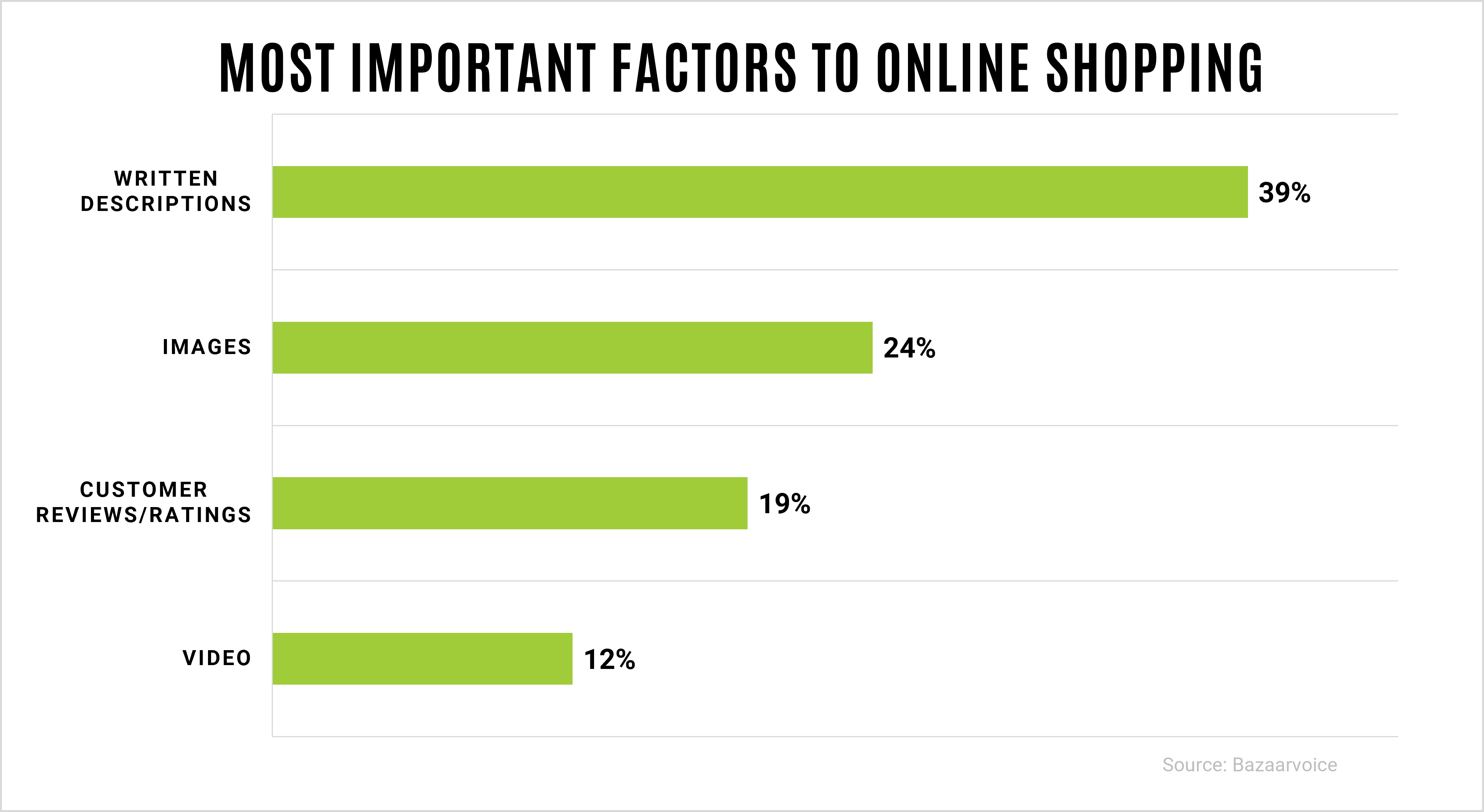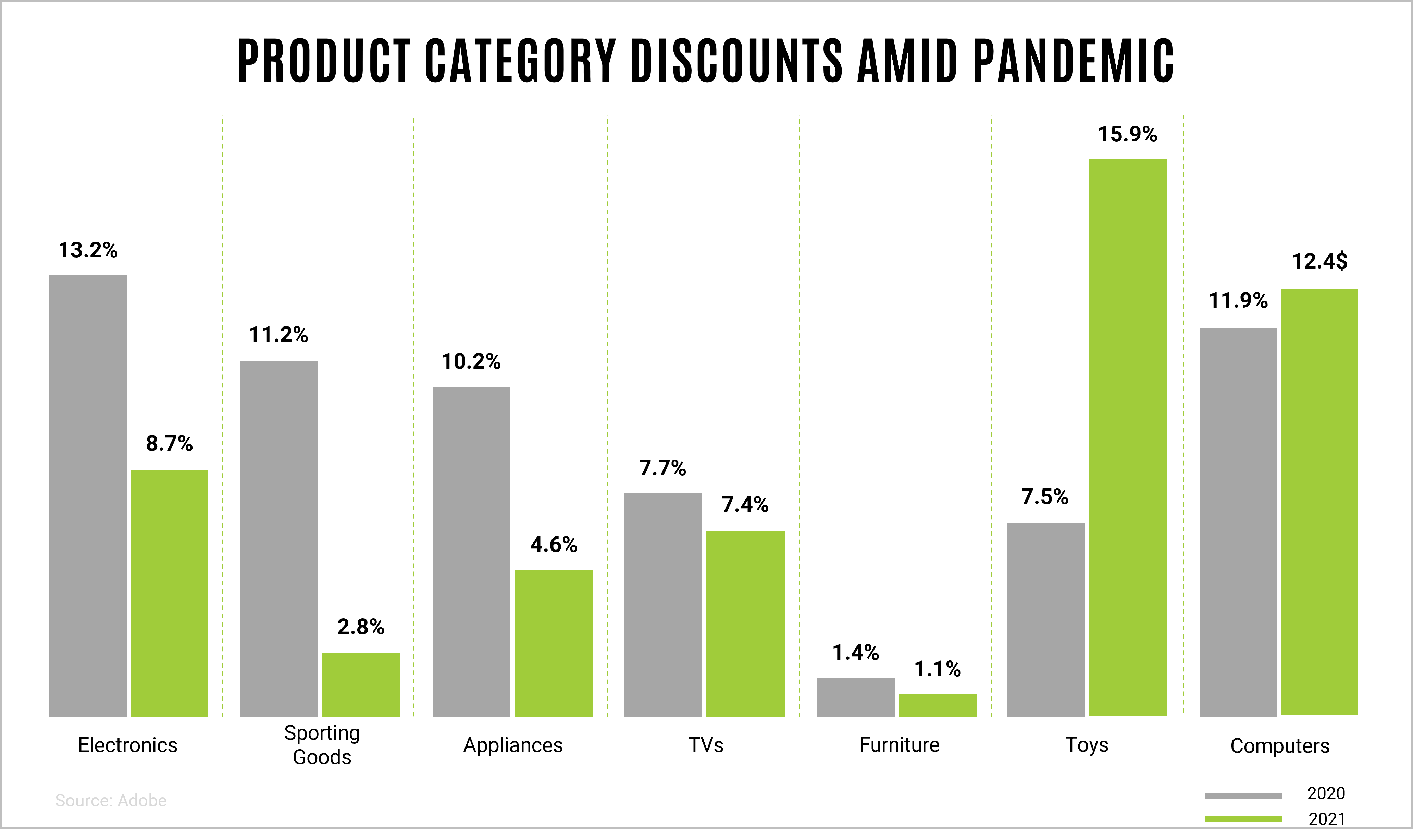Buzzworthy Insights – Online Customer Buying Journey
Online Retail Customer Buying Journey
Online retail has gained a forever foothold in consumers’ minds and with it brought the change to brand loyalty, especially among younger generations. According to a new survey from Inriver, only 14% of consumers wouldn’t switch to a competitive product if their first choice was unavailable. When it comes to the start of their buying journey, marketplaces Amazon and eBay are king at 44% of all product research starting at these two sites, followed by search engine themselves at 19%, and brands own websites at 9%. When deciding what products to purchase, 82% will look at multiple websites for information on products, 69% of consumers have decided against a product generally due to a poor description, and 45% of consumers feel frustrated when viewing bad product information. In terms of choosing a new brand via social shopping, personalization becomes the key driver as 50% of social shopping respondents said relevance to their wants and needs is most important, closely followed by product benefits/feature/ingredients at 49%, lastly price at 29%. (View source)

Frontline Worker Experience
Undervalued, unheard, and underpaid.
A new survey from SafetyCulture highlights the differences frontline workers and management are experiencing in the US, UK, and Australia. “Frontline workers”, according to the survey, are described as individuals who must “physically show up to their job”, including workers in the hospitality, retail, manufacturing, and logistics fields. Unsurprisingly, the greatest complaint at two-thirds of these workers was that they are never, rarely, or only sometimes listened to on topics that matter to them most, followed by operations at 54%, health/wellbeing (49%), and safety at 46%. When it comes to reporting issues, only 27% of American frontline workers feel empowered to take action and solve an issue themselves but 36% of these workers fear losing their job if they report or take action on an issue, including COVID-19 protocols. (View source 1, source 2)
Connected Shopping
Consumers are returning to shopping craving for a new experience, an escape from the pandemic and all it has brought. Retailers can enhance their in-store experience with many different technological adaptations from cashier-less stores to mobile empowerment. Amazon, Circle K, Albertsons, and other big-name retail stores are implementing cameras throughout their stores to create a seamless shopping experience with no cashiers or checkout lines. Opie is taking the drive-thru concept a different route by opening their first 24/7 convenience store that features a drive-thru option for quick ordering and pick-up, receiving items in minutes. Steve Madden Mexico is incorporating new omnichannel platforms to their brick-and-mortar stores, allowing their store associates to use handheld devices that can checkout customers anywhere in the store. (View source)
Holiday Shopping
Retailers are offering holiday deals earlier than ever, resulting in October seeing a record-high $72.4 billion of e-commerce spending. The leading sales categories are toys (up 50% from Sept. 2021 average), groceries (34%), video games (20%), and gift cards (20%). Driving this early spending, consumer worries that they may not receive gifts on time due to the supply chain disruptions and worker limitations. And they rightly worry as out-of-stock messages numbered over 2 billion last month, up 250% compared to January 2020, and up 325% when compared to October 2019. While discounts amid the pandemic have steadily decreased, tools/home improvement were the only category to see no discounts, with prices up 1.2% in 2021 compared to a 6.8% discount in 2020.

Due to the supply chain issues, we have seen consumers purchasing holiday gifts earlier than ever before, resulting in NetElixir raising their holiday growth expectations from 6% – 7% to 12% – 13%. They chose to increase the predicted growth because of this early spending, as customers are paying full price instead of waiting for deals. The online spending increase and supply chain issues have caused shortages in many product categories with 30% of online retailers indicating they will run out of stock by December 10th. As the supply chain issues continue to disrupt product inventory, gift card purchases have risen tremendously. Visa took the top spot at 14.8% of all gift card purchases at an average of $107, second was Amazon with 13.5% at an average of $76, Mastercard comes in third at a mere 1.3% and an average of $72. In the casual dining sector, Starbucks took the highest share, and was responsible for 11.7% of all gift cards sold in September and October of 2021. (View source 1, source 2, source 3)
The Autonomous Revolution
Retailers all around the globe are brainstorming new ways to deal with the shortage of workers across multiple industries. Leading this change, autonomous capabilities. Uber has recently partnered with Serve Robotics to launch their sidewalk food delivery service for Uber Eats in the Los Angeles area. Allowing partners of the app to place food in temperature-controlled areas of the robot, before the robot then travels to the delivery location. In a much grander scale, Walmart will be the first company to harness autonomous delivery trucks with no driver onboard for the “middle mile” of their supply chain operations. The multi-temperate autonomous box trucks will function in Walmart’s headquarter city, Bentonville, Ark., moving products from a fulfillment-only dark store to the nearby Walmart Market store. In terms of last-mile logistics, American Eagle has been investing heavily in these operations, with a recent acquisition of Quiet Logistics Inc., they are hoping to further speed up package sorting and inventory efficiencies with these state-of-the-art autonomous operations. The company claims recent investments in its supply chain capabilities have cut average shipping time by 1.5 days. (View source 1, source 2, source 3)
Thanks for reading!
If you’d like Buzzworthy Insights sent to your inbox weekly, subscribe to the newsletter.


